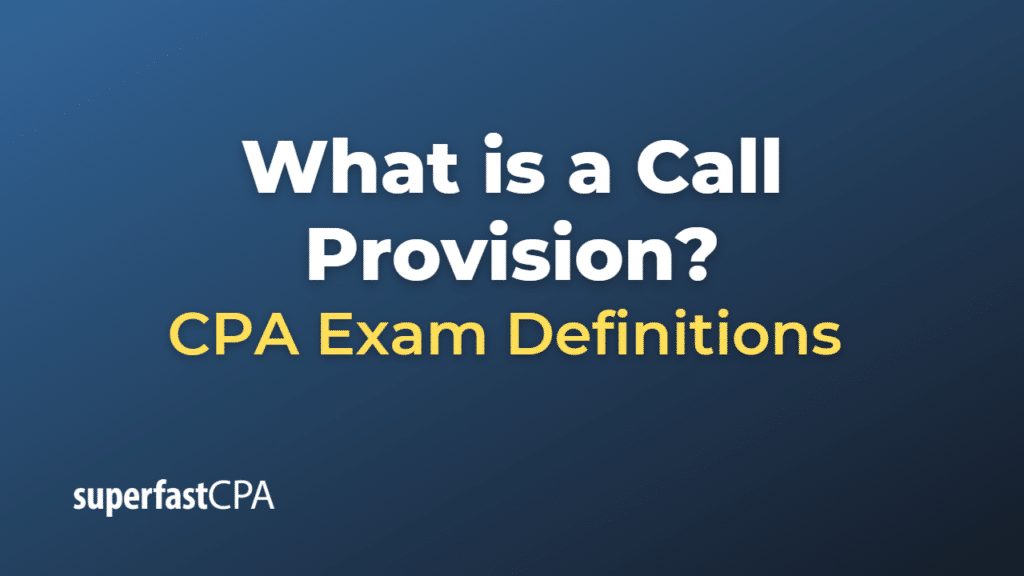Call Provision
A call provision, also known as a call feature, is a clause in a bond or preferred stock contract that allows the issuer (the company or organization that issued the bond or preferred stock) to redeem or “call” the security before its maturity date. When the issuer exercises the call provision, they buy back the bond or preferred stock from investors at a predetermined call price, which is often set at a premium above the face value (par value) of the security.
Call provisions are typically included in the terms of callable bonds and callable preferred stocks, giving the issuer the flexibility to retire outstanding debt or preferred stock early under certain conditions. Issuers generally exercise call provisions when interest rates fall or their credit quality improves, enabling them to refinance their debt at a lower interest rate or reduce the cost of their preferred stock dividends.
For investors, call provisions introduce reinvestment risk, as they may have to reinvest the proceeds from the called bonds or preferred stocks at lower yields if the interest rates have declined since they originally invested.
Key aspects of call provisions include:
- Call date: The date on which the issuer becomes eligible to exercise the call provision and redeem the security. There may be multiple call dates or a continuous call period.
- Call price: The price at which the issuer can buy back the security. The call price is often set at a premium above the face value of the security to compensate investors for the early redemption risk.
- Call protection: A period during which the security cannot be called, offering investors protection from early redemption. After the call protection period expires, the issuer may exercise the call provision.
It’s important for investors to understand the call provisions associated with bonds or preferred stocks they are considering investing in, as these provisions can impact their returns and the degree of reinvestment risk they may face.
Example of a Call Provision
Let’s consider a hypothetical example of a callable bond with a call provision.
Suppose a company called “BlueWave Communications” issues a 10-year callable bond with a face value of $1,000 and an annual coupon rate of 5%. The bond has a call provision that allows BlueWave Communications to call the bond after five years, starting on the first call date, at a call price of 103% of the face value.
As an investor, you purchase the bond and receive annual interest payments of $50 (5% of $1,000) for holding the bond.
Five years after the bond’s issuance, interest rates in the market have fallen significantly, and BlueWave Communications is now able to issue new bonds at a lower interest rate of 3%. To take advantage of the lower interest rates and reduce its interest expenses, BlueWave Communications decides to exercise the call provision and redeem the outstanding callable bonds.
As per the call provision, BlueWave Communications pays you the call price of $1,030 (103% of $1,000) to redeem the bond before its maturity date. Now, as an investor, you face reinvestment risk because you have to find a new investment for the proceeds from the called bond, and the current market interest rates are lower than when you initially invested in the BlueWave Communications bond.
In this example, the call provision allowed BlueWave Communications to retire its outstanding debt early and refinance at a lower interest rate, while the bondholders faced the risk of reinvesting the proceeds at lower yields due to the early redemption.













